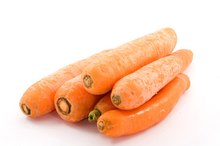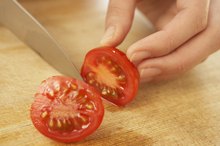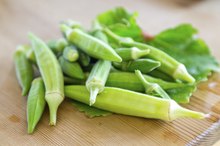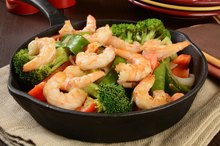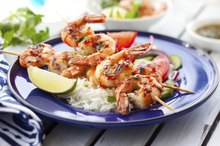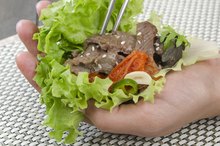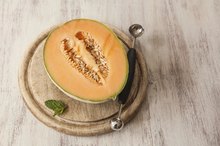Your individual genetic makeup may hold the key to losing weight. According to the GenoType Diet, whether you are an explorer, gatherer, hunter, nomad, teacher or warrior may impact what foods you should eat, as well as how you should approach exercise and weight loss. Developed by naturopathic physician Peter J. D’Adamo, the GenoType Diet outlines how to make dietary and lifestyle choices based on your body type and genetic make-up 1. Consult your physician before committing to any new diet plan.
Explorer
If you have an explorer body type, then you will need to limit a few common food items, including ham, bacon and most eggs and cheeses. Red meat and poultry items that you can consume include lamb, mutton, rabbit, turkey and quail. You can have goose and quail eggs, as well as mozzarella and ricotta cheese.
Gatherer
Herpes & Arginine
Learn More
Gatherers have to limit most red meats and poultry, as well as many nuts, seeds and legumes. Gatherers can have chicken and duck eggs, as well as cottage cheese. You can enjoy a wide variety of vegetables, including all types of onions, most mushrooms and many peppers. Other vegetables on your food list include:
- asparagus
- zucchini
- spinach
- tomato
- celery
- water chestnut
- turnip greens
You have many fruits from which to choose as well, such as
- apricot
- grapefruit
- nectarine
- papaya
- peach
- raspberry
- watermelon
- Gatherers have to limit most red meats and poultry, as well as many nuts, seeds and legumes.
- You can enjoy a wide variety of vegetables, including all types of onions, most mushrooms and many peppers.
Hunter
If you have a hunter profile, you will need to limit most dairy items and many grains. You can enjoy beef and venison on the diet, as well chicken and turkey. Your fish options include bass, herring and mackerel, and you may have chicken eggs as well as butter. Some of the nuts and legumes on your food list include almonds, black beans and black-eyed peas. You can choose from among many live foods as well, including broccoli, okra, asparagus and sweet potato.
- If you have a hunter profile, you will need to limit most dairy items and many grains.
- You can choose from among many live foods as well, including broccoli, okra, asparagus and sweet potato.
Nomad
Low-Nickel Diet Plan
Learn More
Nomads on the GenoType Diet need to limit many common foods, including many red meats and poultry, as well as most nuts and seeds. As a nomad, you can enjoy lamb, mutton and turkey on the diet, as well as many fish, such as:
- salmon
- catfish
- halibut
You can have a variety of grains, from millet and oats, to quinoa, rice and kudzu. Fruits include strawberries, tangerine and watermelon.
Teacher
If you have a teacher body type, you need to limit many red meats and some poultry. You can have mutton and turkey, as well as fish such as tuna and cod. You can consume various legumes and nuts including almonds, peanuts, pecans, lentils and peas. Some grains on your foods list are quinoa, rice and wheat.
- If you have a teacher body type, you need to limit many red meats and some poultry.
- You can have mutton and turkey, as well as fish such as tuna and cod.
Warrior
Warriors must limit all red meats and many poultry items on the GenoType Diet. You can have chicken eggs and cottage cheese as well. You can consume various grains, including lentils, oats, quinoa, rice and wheat, as well as many nuts and legumes, such as:
- pecans
- peas
- pinto beans
Related Articles
References
- “The GenoType Diet: Change Your Genetic Destiny to Live the Longest, Fullest, and Healthiest Life Possible”; Peter J. D’Adamo, Catherine Whitney; 2007
- “Change Your Genetic Destiny”; Peter J. D’Adamo, Catherine Whitney; 2009
Writer Bio
Christine Switzer has been a freelance writer since 2007. She contributes to travel and regional periodicals such as "Georgetown View" and "Burlington the Beautiful" and she enjoys writing on travel, lifestyle and the workplace. Switzer holds a Bachelor of Arts in journalism and a Master of Arts in English and has taught university courses in communication, public speaking and journalism.

